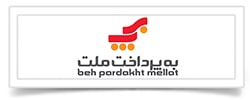Content

For purposes of this definition, “Approved Bank” means a financial institution which has a minimum net worth of $500,000,000 and/or total assets of at least $10,000,000,000 and a minimum long-term debt rating of A+ by S&P or A1 by Moody’s. Cash and cash equivalent offer a high level of liquidity to the company. Marketable securities and money market holdings are equivalent of cash because they are highly liquid and are not exposed to material deviations in value. A company with a healthy sum of cash and cash equivalent in its balance sheet is generally considered efficient enough or capable enough to meet its short-term obligations.
ADVANCED OXYGEN TECHNOLOGIES INC MANAGEMENT’S DISCUSSION AND ANALYSIS OR PLAN OF OPERATION. (form 10-K) – Marketscreener.com
ADVANCED OXYGEN TECHNOLOGIES INC MANAGEMENT’S DISCUSSION AND ANALYSIS OR PLAN OF OPERATION. (form 10-K).
Posted: Wed, 28 Sep 2022 10:08:12 GMT [source]
Reponses to the questions related to the ITS on Supervisory reporting may include examples either in the text of the answer or as a separate attachment. Maintaining adequate cash records, including petty cash and the preparation of regular bank reconciliations. Certificates of Deposits (CD’s) are usually recorded as short-term investments. Generally, only investments with original maturities of three months or less meet this definition. Too much of cash may also resemble that company is not paying dividends to its shareholders and instead of retaining back the money.
Definition of Cash Equivalents
After almost a decade of experience in public accounting, he created MyAccountingCourse.com to help people learn accounting & finance, pass the CPA exam, and start their career. The extra cash be used as a form of a dividend to be issued to the shareholders. In another case, a huge pile of up cash for capital-intensive firms would imply an investment in a big project or machinery. Preferred stocks can be included within three months of the redemption date. Cash in checking accounts allow to write checks and use electronic debit to access funds in the account. This interest-bearing account is similar to a savings account; however, they often require larger minimum deposits and have some minor restrictions to the account.

Treasuries or other government bonds for a fee and collateral that could include high-quality securities. This is because these instruments offer security, ease of purchase and liquidity , and enhanced yield. Of these, money market funds are the most popular, according to the Investment Company Institute, since they invest in high-quality, short-term instruments such as corporate and Treasury debt. The interest payments of money market funds increase with rising interest rates. The historic low returns in government bonds have pushed many investors into cash and money market funds.
Cash and Cash Equivalents Examples
In simple terms, the capital budgeting process involves generating ideas, making proposals about several potential projects, and evaluating proposals. One popular ETF tracks U.S. investment-grade corporate bonds, listed in U.S. dollars, with maturities less than five years.
Does a balance sheet always balance?
Does a Balance Sheet Always Balance? A balance sheet should always balance. The name itself comes from the fact that a company's assets will equal its liabilities plus any shareholders' equity that has been issued.
FREE INVESTMENT BANKING COURSELearn the foundation of Investment banking, financial modeling, valuations and more. For example, maybe the management has not figured out the best way to deploy cash. In this case, one of the strategies could be to provide a return to the shareholders by buying back shares.
One-month U.S. Treasury bills
Consolidation can be done in this case because the drivers of the cash and investments roll-forward schedules are identical (i.e. the same net impact on the ending cash balance). Equity InvestmentsEquity investment is the amount pooled in by the investors in the shares of the companies listed on the stock exchange for trading. The shareholders make gain from such holdings in the form of returns or increase in stock value. Investopedia requires writers to use primary sources to support their work. These include white papers, government data, original reporting, and interviews with industry experts.
One of the company’s crucial health indicators is its ability to generate cash and cash equivalents. So, a company with relatively high net assets and significantly less cash and cash equivalents can mostly be considered an indication of non-liquidity.
Cash is the most liquid of the financial assets and is the standard medium of exchange for most business transactions. Businesses can report these two categories of assets on the balance sheet separately or together, but most companies choose to report them together. It helps in borrowing as the lender will look at the cash and cash equivalent portion of the company to take it as a sort of commitment by the company. Learn accounting fundamentals and how to read financial statements with CFI’s free online accounting classes. To reiterate, the “Cash and Cash Equivalents” line item refers to cash – the hard cash found in bank accounts – as well as cash-like investments.
Is fixed deposit a cash equivalent?
As per the guidelines FD in a bank is a current assets and it will be shown under cash & cash equivalent. Years of maturity is immaterial for the purpose of recording FD in balance sheet.
Some of the key ratios include the amount of cash and equivalents on hand. The cash ratio indicates the company’s ability to cover current expenses. The quick ratio compares cash, equivalents, short-term receivables and marketable securities to current liabilities. For a company without other short-term assets, cash and equivalents are the most significant factors in this ratio. A company’s balance sheet illustrates its mix of assets and liabilities, but the specific composition of each section provides useful information for business owners as well as potential investors or customers.
Components of cash
We also reference original research from other reputable publishers where appropriate. You can learn more about the standards we follow in producing accurate, unbiased content in oureditorial policy. This may be considered a cash equivalent if they are purchased shortly before the redemption https://www.bookstime.com/ date and not expected to experience material fluctuation in value. These debt instruments are issued by the United States government and often have a maturity date of one year or less. They pay a floating interest rate based on a 90-day treasury bill’s returns plus a spread.
- For example, a large machine manufacturing company receives an advance payment from its customer for a machine that should be produced and shipped to another country within 2 months.
- However, if the cash flow out of the country is restricted, the cash is treated in the accounts as restricted and reported separately.
- After almost a decade of experience in public accounting, he created MyAccountingCourse.com to help people learn accounting & finance, pass the CPA exam, and start their career.
- Cash is the most liquid of the financial assets and is the standard medium of exchange for most business transactions.
- Maintaining adequate cash records, including petty cash and the preparation of regular bank reconciliations.
If an investment matures in more than three months, it should be classified in the account named “other investments.” Cash equivalents should be highly liquid and easily what is cash and cash equivalents sold on the market. While a company should have enough cash and equivalents to cover necessary operating expenses, it’s possible to have too much cash on hand.
Related Definitions
On a balance sheet, short-term assets are those that can be converted into cash in less than one year. From this definition, “quick assets” can be converted to cash within 90 days while “current assets” can be converted to cash within one year. Similarly, accounts receivable are not cash equivalents since they carry a conversion time over 15 days.
- Other examples are banker’s acceptance, short-term commercial paper, and other money market instruments.
- These debt instruments are issued by the United States government and often have a maturity date of one year or less.
- Savings and checking accounts and money market accounts are often insured up to $250,000 by the FDIC.
- Also, if we look at Colgate’s short-term and long-term investments, they are pretty much nonexistent.


